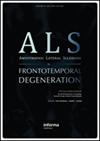Cycles of Quotidian Pandemic Instances
引用次数: 0
Abstract
By silencing the knowledge of our past, it will not disappear; it transforms into a hum. The hum, as a fluid object of silence can be mournful, can represent absence. The hum that we are neglecting connects with our feelings, registering as cyclic vibrations in contact with parts of the body. The vibrato of the hum speaks of unspoken relations that, according to Tina Campt, unifies quietness with sound, surrounded by affect within a register of meaningfulness. If we don’t dare to remember, some images will enunciate—and speak to—the affective register. With the sonic integration of Radio Influenza, artist Jordan Baseman’s computerized voices narrate stories from 1918 through newspaper fragments. The audible tracks add another register to the vibrations, complicating Paul Gilroy’s “politics of transfiguration,” where the “lower frequency” is purposefully over(p)layed mainly with a different set of forgotten histories suppressed from the war narrative. Hence, the sound is felt from an audible and visual register, enacted at the level of the quotidian narratives of twentieth-century photographs and newspaper stories. If we listen to these quiet photos, to these muffled stories, can we acknowledge that just as sonic vibrations, pandemics tend to come in waves as well? In the end, the 1918 spring influenza outbreak was followed by three waves: the fall of 1918, spring of 1919, and winter of 1919. These waves of history, sound, and pandemics, can push us to resist the neglectfulness and acknowledge what we have unlearned from the cycles of quotidian instances, time and time again.日常流行病实例的周期
通过对过去的沉默,它不会消失;它变成了嗡嗡声。嗡嗡声,作为静默的流动对象,可以是悲伤的,可以代表缺席。我们忽略的嗡嗡声与我们的感觉联系在一起,记录为与身体部位接触的循环振动。根据蒂娜·坎普特(Tina Campt)的说法,嗡嗡声的颤音讲述了未言说的关系,将安静与声音统一起来,在有意义的范围内被情感所包围。如果我们不敢记忆,一些图像就会清晰地表达——并与情感域对话。随着无线电流感的声音整合,艺术家乔丹·巴斯曼的电脑声音通过报纸碎片讲述1918年的故事。可听的音轨为震动增添了另一种音轨,使保罗·吉尔罗伊的“变形的政治”变得复杂起来,在那里,“较低的频率”被故意掩盖(p),主要是由一组不同的被遗忘的历史压抑在战争叙事中。因此,声音是从听觉和视觉的角度来感受的,在20世纪的照片和报纸故事的日常叙述层面上制定的。如果我们听听这些安静的照片,听听这些不为人知的故事,我们能不能承认,就像声波振动一样,流行病也会以波的形式出现?最后,1918年春季流感爆发之后出现了三波:1918年秋季、1919年春季和1919年冬季。这些历史、声音和流行病的浪潮可以促使我们抵制忽视,并承认我们一次又一次地从日常事件的循环中没有学到的东西。
本文章由计算机程序翻译,如有差异,请以英文原文为准。
求助全文
约1分钟内获得全文
求助全文

 求助内容:
求助内容: 应助结果提醒方式:
应助结果提醒方式:


